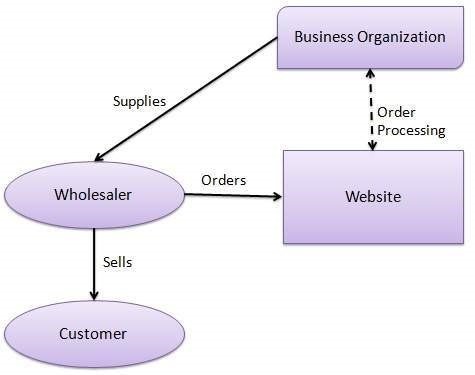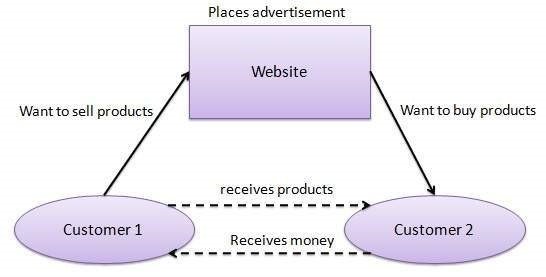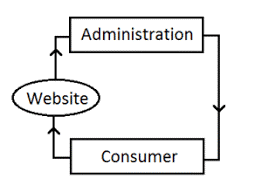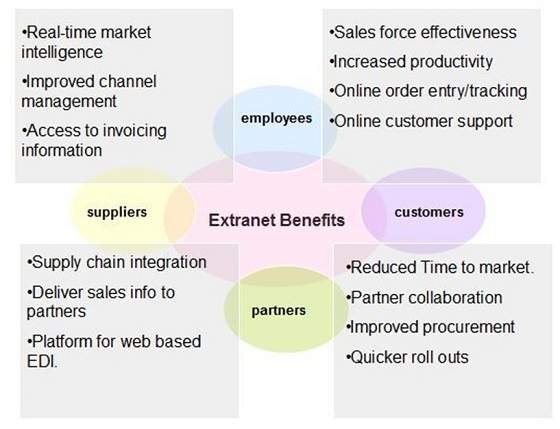Encryption, Types, Benefits, Challenges
Encryption is a security technique that converts readable data (plaintext) into an unreadable format (ciphertext) using algorithms and encryption keys. It ensures that sensitive information, such as passwords, credit card details, and personal data, remains secure during storage or transmission over networks like the internet. Only authorized parties with the correct decryption key can convert the ciphertext back to its original form. Encryption is a core element of cybersecurity and e-commerce security, protecting data from hackers, identity thieves, and unauthorized access. Common encryption types include symmetric encryption (same key for encryption and decryption) and asymmetric encryption (public and private keys).
Types of Encryption:
-
Symmetric Encryption
Symmetric encryption uses a single key for both encryption and decryption of data. The sender encrypts the data with the key, and the receiver uses the same key to decrypt it. It is fast, efficient, and suitable for encrypting large volumes of data. However, its main challenge lies in securely sharing the key between parties, as interception can compromise security. Popular symmetric encryption algorithms include AES (Advanced Encryption Standard), DES (Data Encryption Standard), and 3DES (Triple DES). Symmetric encryption is widely used in database encryption, file protection, and secure communications where speed is a priority and key management is well-handled.
-
Asymmetric Encryption
Asymmetric encryption uses a pair of keys — a public key for encryption and a private key for decryption. The public key can be shared openly, while the private key remains secret. This method enhances security since even if the public key is intercepted, the private key is required to decrypt the data. Asymmetric encryption is slower than symmetric encryption but offers more secure key distribution. Common algorithms include RSA (Rivest-Shamir-Adleman) and ECC (Elliptic Curve Cryptography). It is often used for digital signatures, secure email, SSL/TLS certificates, and encrypting small amounts of data, such as symmetric keys in hybrid encryption systems.
- Hashing
Hashing is a one-way encryption technique that converts input data into a fixed-length string called a hash value or digest. It cannot be reversed to obtain the original data, making it ideal for storing sensitive information like passwords. Even small changes in the input produce drastically different hash values. Hashing is used in data integrity verification, digital signatures, and authentication systems. Popular hashing algorithms include MD5 (Message Digest 5), SHA-1 (Secure Hash Algorithm 1), and SHA-256. While hashing ensures integrity, it is vulnerable to brute force and collision attacks, which can be mitigated using techniques like salting and stronger algorithms.
-
Hybrid Encryption
Hybrid encryption combines the strengths of symmetric and asymmetric encryption for improved performance and security. In this method, asymmetric encryption is used to securely exchange a symmetric key, and symmetric encryption is then used to encrypt the actual data. This approach ensures secure key distribution while maintaining high-speed data encryption. Hybrid encryption is commonly used in secure web communications (HTTPS), email encryption, and online transactions. For example, in SSL/TLS protocols, RSA or ECC encrypts the symmetric session key, and AES encrypts the data. This method balances speed and security, making it suitable for modern e-commerce and cloud communication systems.
Benefits of Encryption:
-
Data Confidentiality
Encryption ensures that sensitive information remains private and inaccessible to unauthorized users. By converting readable data (plaintext) into an unreadable format (ciphertext), only those with the correct decryption key can access it. This prevents hackers, cybercriminals, or unauthorized individuals from interpreting stolen data. Confidentiality is crucial in industries like banking, healthcare, and e-commerce, where customer trust depends on secure data handling. Even if data is intercepted during transmission or stolen from storage, encryption keeps it safe from exploitation. This benefit is especially important for protecting personal, financial, and corporate information in the age of rising cyber threats.
-
Data Integrity
Encryption safeguards the accuracy and completeness of data by preventing unauthorized modifications. While encryption itself does not directly detect changes, when combined with hashing or digital signatures, it ensures that the data received is exactly as intended. Any alteration during storage or transmission makes the data unreadable or invalid. This is essential for maintaining trustworthy transactions, secure file sharing, and legal document protection. Integrity is especially important in financial systems, government communications, and e-commerce, where even small changes can lead to significant errors or fraud. Encryption thereby strengthens trust and reliability in digital information exchange and storage.
-
Secure Data Transmission
Encryption protects data as it travels across networks, ensuring it remains safe from interception and eavesdropping. This is critical in online banking, shopping, and communication platforms where sensitive information like passwords, payment details, and personal messages are transmitted. Protocols like SSL/TLS rely on encryption to secure web traffic between browsers and servers. Without encryption, transmitted data could be captured and misused by hackers using packet sniffing tools. By converting the information into ciphertext, encryption ensures that even if intercepted, the data is meaningless to attackers, providing a safe communication channel for individuals and businesses.
-
Regulatory Compliance
Many industries are legally required to protect customer data using encryption to comply with privacy and security regulations. Laws like the GDPR (General Data Protection Regulation), HIPAA (Health Insurance Portability and Accountability Act), and PCI DSS (Payment Card Industry Data Security Standard) mandate encryption for sensitive personal, medical, and financial data. Non-compliance can result in severe legal penalties, financial losses, and reputational damage. By implementing encryption, organizations meet these standards, demonstrate due diligence, and build trust with customers and partners. Compliance also helps businesses expand globally by adhering to international security norms and protecting cross-border data transfers.
-
Protection Against Data Breaches
Encryption acts as a strong defense mechanism against data breaches. Even if cybercriminals manage to steal databases or intercept files, the encrypted data is useless without the decryption key. This drastically reduces the risk of financial loss, identity theft, and corporate espionage. Many high-profile breaches have shown that unencrypted data leads to severe consequences for businesses and customers. With encryption in place, organizations can limit the damage caused by security incidents and assure stakeholders that sensitive data remains secure. This protective layer is vital in today’s environment, where cyberattacks are increasingly sophisticated and persistent.
-
Trust and Customer Confidence
When businesses use encryption to protect customer data, they enhance trust and loyalty. Customers are more likely to engage with organizations that prioritize security, especially when sharing personal or financial details. Encrypted communications and transactions reassure clients that their information is safe from hackers and fraudsters. This trust translates into stronger brand reputation, higher customer retention, and a competitive advantage in the market. In e-commerce, banking, and healthcare, encryption is not just a technical safeguard but also a business asset. Demonstrating strong encryption practices can also serve as a marketing point, showcasing the company’s commitment to security.
Challenges of Encryption:
-
Performance Overhead
Encryption processes consume computational resources, including CPU power and memory. Strong encryption algorithms, while more secure, require greater processing time for encryption and decryption. This can slow down data transfers, reduce application responsiveness, and increase server workload, especially in high-traffic systems. For businesses managing large-scale transactions, the added latency may negatively affect user experience. In resource-constrained environments, such as mobile devices or IoT systems, performance issues are even more pronounced. Optimizing encryption without compromising security becomes a key challenge, particularly when balancing speed, usability, and robust data protection in time-sensitive applications.
-
Key Management Complexity
Encryption’s effectiveness heavily depends on secure key management. Storing, distributing, and rotating encryption keys without exposing them is challenging. If keys are lost, encrypted data may become permanently inaccessible; if stolen, security is compromised. Organizations must establish strict key lifecycle management policies, use hardware security modules (HSMs), and maintain secure backup processes. In large enterprises with multiple systems and users, key synchronization and revocation can be complex. Additionally, ensuring compliance with industry standards like PCI DSS or GDPR adds another layer of administrative difficulty, making key management a critical yet vulnerable point in encryption systems.
-
Compatibility and Integration Issues
Different systems, devices, and software may use varied encryption protocols and formats. Ensuring compatibility between legacy systems and modern encryption methods can be complex. For instance, older applications might not support current cryptographic standards, requiring expensive upgrades or custom integration. Cross-platform communication also poses risks if encryption algorithms differ. Migrating data from one system to another may require decryption and re-encryption, increasing exposure risk. Furthermore, cloud services, third-party integrations, and IoT devices often have their own encryption policies, making seamless interoperability a challenge for maintaining consistent and secure encryption practices.
-
Regulatory and Compliance Challenges
Encryption practices are subject to national and international regulations. Some countries impose restrictions on encryption strength or require government-accessible backdoors, creating conflicts between legal compliance and data privacy. In regulated industries like finance and healthcare, encryption must align with specific standards such as HIPAA or PCI DSS, which require precise key lengths, storage protocols, and audit trails. Businesses operating globally must navigate different jurisdictional rules, sometimes redesigning encryption approaches for different markets. Compliance audits and documentation add to operational burdens, making it essential yet challenging to maintain encryption practices that satisfy all legal and regulatory requirements.
-
Cost and Resource Requirements
Implementing robust encryption involves costs beyond just software or algorithm deployment. Businesses may need to invest in advanced hardware like HSMs, employ specialized IT staff, purchase licenses for enterprise-grade encryption solutions, and maintain secure backup systems. Operational expenses also include regular security audits, updates, and compliance checks. For small to medium-sized enterprises, these costs can be significant, leading some to opt for weaker or partial encryption, thus increasing vulnerability. Balancing the budget with the need for strong, up-to-date encryption is an ongoing challenge, particularly as threats evolve and encryption standards become more demanding.
-
False Sense of Security
While encryption is a powerful tool, it is not a complete security solution. Over-reliance on encryption can lead organizations to neglect other critical security measures such as access control, network security, and regular patching. If attackers bypass encryption by exploiting software vulnerabilities, stealing keys, or using phishing attacks, the data remains exposed. Employees and decision-makers may mistakenly believe that encryption alone makes their systems impervious to threats, leading to reduced vigilance. True security requires encryption to be part of a multi-layered defense strategy, combined with monitoring, firewalls, and robust authentication systems.






